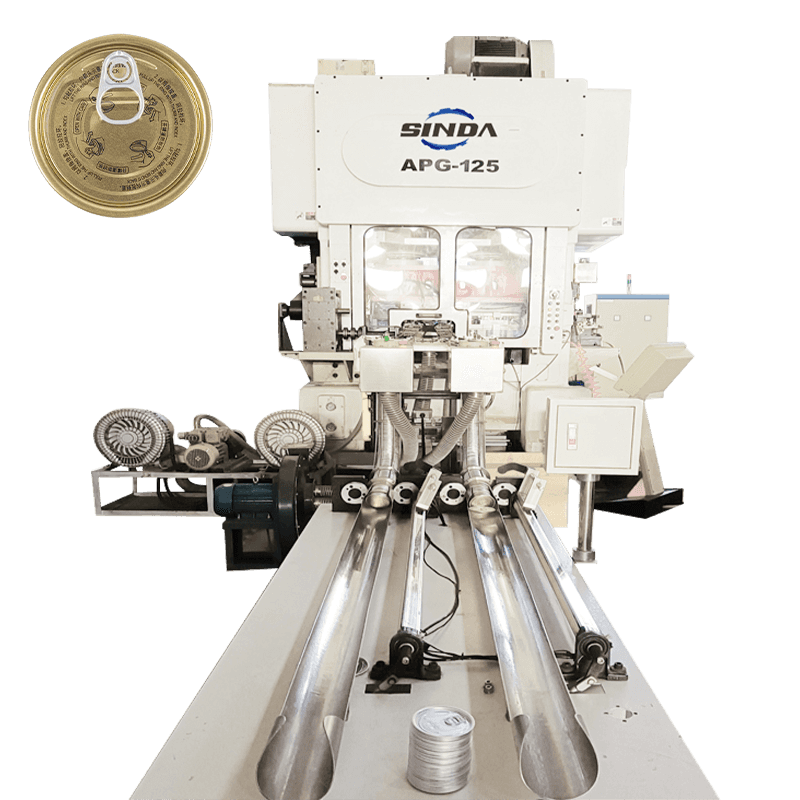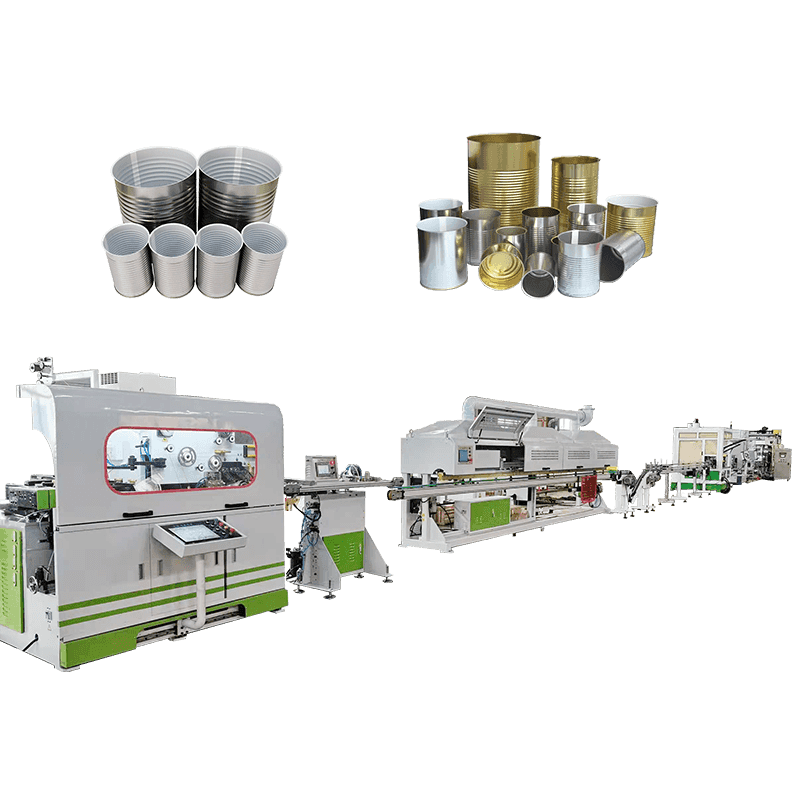Understanding the Sources of Noise and Vibration in a 2-Piece DRD Can Production Line
In a 2-piece Draw and Redraw (DRD) can production line, noise and vibration are common challenges that arise due to high-speed mechanical operations, metal forming processes, and continuous motion of multiple components. The forming, trimming, and washing stages involve rapid impacts and friction that can generate mechanical vibrations, while air pressure systems and conveyors add acoustic noise. Understanding these sources is the first step in managing the problem effectively. Typically, vibrations originate from unbalanced rotating parts, misalignment in drives, or resonance within the machine structure, while noise is primarily caused by metal-to-metal contact and airflow turbulence.
Importance of Noise and Vibration Control
Controlling noise and vibration in a DRD can production line is not only about operator comfort but also about maintaining machine precision, extending component life, and ensuring consistent product quality. Excessive vibration can accelerate wear on bearings, gears, and molds, leading to costly downtime. Noise, on the other hand, can contribute to unsafe working environments and violate industrial safety regulations. Implementing proper control measures enhances the stability of the production process and helps maintain compliance with workplace health standards.
Structural Reinforcement and Machine Foundation
One of the most effective ways to minimize vibration is to reinforce the machine base and ensure a stable foundation. A DRD production line should be installed on a level, vibration-isolated surface that can absorb dynamic forces. Using high-density concrete foundations with embedded vibration-damping materials can reduce resonance transmission. Additionally, installing adjustable leveling mounts or anti-vibration pads between the machine and the floor can absorb shock and prevent vibration propagation across the plant floor.
Balancing Rotating and Reciprocating Components
Unbalanced mechanical parts such as punch drives, spindles, and rollers are major contributors to vibration. Regular balancing of these components ensures smooth operation and reduces oscillation. During high-speed drawing and redrawing, even minor imbalances can produce amplified vibration. Employing precision balancing techniques using dynamic balancers or laser alignment systems can significantly improve stability. Consistent inspection and adjustment of drive belts, pulleys, and couplings also contribute to steady operation and lower noise.
Lubrication and Friction Reduction
Friction between metal surfaces in can forming and trimming stages often generates noise and vibration. Proper lubrication not only minimizes these effects but also enhances tool life and surface finish. Selecting appropriate lubricants with high viscosity stability and maintaining clean lubrication channels are essential. Automated lubrication systems can deliver consistent oiling at precise intervals, preventing metal-to-metal contact that leads to squealing or vibration. Periodic checks of lubrication nozzles, filters, and flow rates ensure that the entire system operates efficiently.
Optimizing Air and Hydraulic Systems
In DRD can production lines, pneumatic and hydraulic systems play a crucial role in tool actuation and part transfer. However, high-pressure airflows and fluid pulsation can generate significant vibration and noise. To address this, installing air silencers, mufflers, and flow regulators helps reduce acoustic emissions. In hydraulic circuits, using flexible hoses with anti-vibration fittings and dampers can smooth out pressure fluctuations. Regularly bleeding air from hydraulic systems also prevents cavitation and erratic motion that can lead to machine vibration.
Maintenance Practices for Stable Operation
Routine maintenance is fundamental to controlling both noise and vibration. Loosened bolts, worn bearings, or misaligned shafts can cause instability. Scheduled inspections should focus on tightening fasteners, checking for mechanical play, and replacing worn components. Vibration monitoring devices can be installed on critical parts to detect early signs of imbalance or wear. By analyzing vibration frequency and amplitude data, maintenance teams can identify potential issues before they result in downtime or damage.
Noise Reduction through Acoustic Design
Beyond mechanical improvements, acoustic design measures can further reduce the sound level around the production line. Installing soundproof enclosures around forming and trimming stations helps isolate noise sources. Using acoustic panels or foam linings on nearby walls can absorb sound waves, preventing reflection and amplification. In addition, maintaining appropriate machine spacing and layout helps distribute noise evenly, reducing the overall decibel level in the workspace.
Operator Awareness and Training
Operators play a vital role in maintaining low noise and vibration levels. Training them to recognize abnormal sounds or irregular movements helps in early detection of potential issues. Proper handling during setup, alignment, and part changes also minimizes accidental vibration sources. Encouraging operators to follow standard procedures for lubrication, tool cleaning, and component replacement ensures that machines remain in optimal working condition. A culture of awareness contributes to sustained improvement in operational stability.
Comparison of Common Noise and Vibration Control Methods
The following table presents a comparison of several practical methods used in 2-piece DRD can production lines for reducing noise and vibration. It outlines their typical applications and main advantages.
| Control Method | Application Area | Main Advantage |
|---|---|---|
| Anti-vibration Mounts | Machine Base and Foundation | Reduces transmission of structural vibration |
| Dynamic Balancing | Rotating Components | Improves mechanical stability and smooth motion |
| Lubrication Optimization | Forming and Trimming Tools | Decreases friction and noise generation |
| Acoustic Enclosures | Forming Section | Isolates sound sources and reduces decibel levels |
| Hydraulic Dampers | Hydraulic Circuit | Minimizes pulsation and shock vibration |
Use of Vibration Monitoring Systems
Modern DRD production lines can integrate vibration monitoring sensors to provide real-time feedback on machine performance. These sensors detect abnormal vibration frequencies and alert operators before mechanical issues escalate. Data collected from these sensors can be analyzed to establish predictive maintenance schedules, reducing unplanned downtime. With continuous monitoring, small adjustments such as tightening a coupling or rebalancing a shaft can be made proactively, ensuring smoother long-term operation.
Material and Component Upgrades
The selection of materials used in the machine’s frame and tooling also affects vibration control. High-damping alloys and composite materials can better absorb shock compared to conventional steel. Upgrading to precision-ground bearings, vibration-resistant fasteners, and low-noise gear systems further enhances smoothness. For conveyor systems, using belts with damping properties and low-friction surfaces helps in minimizing both structural vibration and acoustic noise.
Environmental and Layout Considerations
The overall layout of the production line influences how vibration and sound propagate through the environment. Positioning high-vibration machines away from sensitive equipment or office areas can reduce interference. Installing sound barriers or partitions between production zones helps confine noise. Adequate spacing between machines prevents resonance buildup and allows maintenance access for adjustment or inspection. Proper ventilation also assists in maintaining stable temperature and reducing noise from air turbulence.

 English
English عربى
عربى русский
русский




